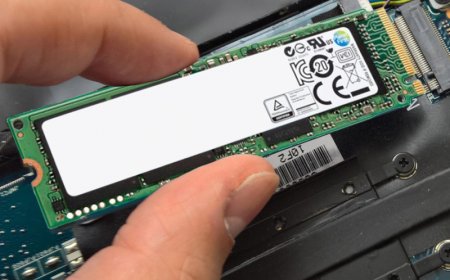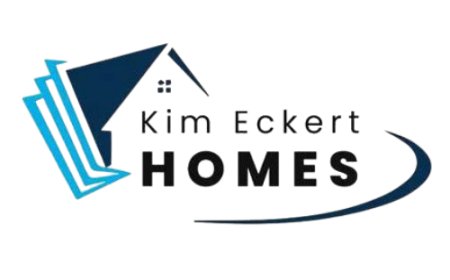What is SonarQube? Everything You Need to Know in 2025
Explore how SonarQube helps modern development teams in 2025 ensure cleaner, safer code. Learn what it does, how it integrates with CI/CD, and why it's essential for secure, audit-ready software delivery.

Code is the foundation of every software product, and keeping that code clean, secure, and reliable has never been more important. In a world where digital transformation is speeding up across industries, businesses need tools that can ensure high-quality code without slowing down development. This is where SonarQube steps in.
SonarQube, developed by SonarSource, is an open-source platform designed for continuous inspection of code quality. It's not just a static code analysis tool; it's a system that helps developers and teams identify bugs, vulnerabilities, code smells, and maintainability issues in real time. And in 2025, its role is more relevant than ever.
What Exactly Is SonarQube?
SonarQube is a code quality platform that integrates directly into development workflows. It analyzes source code across more than 29 programming languagesincluding Java, Python, C#, JavaScript, and Goto flag issues that could impact the security, performance, or maintainability of applications.
Unlike manual reviews or traditional test scripts, SonarQube provides instant, automated feedback. It helps prevent bad code from being merged, which saves time, reduces risk, and improves collaboration across development teams.
Whether its run through a self-hosted SonarQube server, directly in an IDE, or embedded within a CI/CD pipeline (like GitHub Actions, GitLab CI, Azure Pipelines, or Jenkins), the tool is designed to work silently in the backgroundintegrated, not interruptive.
Why It Matters in 2025
With increasing pressure on development teams to ship faster, there's a real danger of code quality slipping through the cracks. At the same time, regulations around security and compliance are getting tighter. This is where SonarQube becomes a must-have rather than a nice-to-have.
From small startups to enterprise IT teams, developers are using SonarQube to:
-
Automate quality checks: Identify issues as the code is written.
-
Enhance collaboration: Give teams a shared language and standards around code quality.
-
Satisfy compliance requirements: Generate audit-ready reports for regulators.
-
Boost security: Detect vulnerabilities before they make it to production.
What makes SonarQube truly stand out is that it encourages developers to fix problems before they become technical debt.
How SonarQube Works Behind the Scenes
Think of SonarQube as a highly skilled reviewer that never sleeps. Heres a simplified version of its workflow:
-
Code is committed to a repository.
-
Build pipelines kick off automated testing and SonarQube scans.
-
Static analysis flags bugs, security hotspots, and duplication.
-
Quality Gates are applied, deciding if the code meets standards.
-
Pull requests receive inline annotations with feedback.
-
Developers review, fix, and merge confidently.
The process is seamless and largely invisible to non-technical stakeholders, but incredibly powerful in maintaining clean, consistent codebases.
Core Features That Make a Difference
Some tools offer code scanning, others offer test coverage, and some even offer compliance insights. SonarQube bundles all of this into one clean dashboard:
-
Static Code Analysis: Finds bugs, code smells, and vulnerabilities.
-
Code Coverage: Integrates with tools like JaCoCo to show test impact.
-
Security Checks: Built-in SAST, SCA, and IaC scanning.
-
Quality Gates: Pre-set conditions that code must pass to be approved.
-
Pull Request Decoration: Highlights issues directly in GitHub or GitLab.
-
IDE Plugins: Gives feedback right inside tools like IntelliJ or VS Code.
-
Multi-language Support: Covers 29+ languages, even niche ones like Apex.
-
Customization: Teams can define their own rules and standards.
-
Audit-Ready Reporting: Logs everything for regulatory visibility.
SonarQube and CI/CD: A Powerful Duo
In modern software development, Continuous Integration and Continuous Delivery (CI/CD) are key to shipping quickly and reliably. SonarQube fits perfectly here. By running code scans automatically within CI/CD tools like Jenkins, Azure DevOps, or GitLab CI, it prevents flawed code from ever reaching production.
Think of it as a quality gatekeeper that sits quietly in your pipeline, flagging issues long before they turn into support tickets or security breaches.
Comparing SonarQube to Jenkins: A Quick Note
Its common to hear SonarQube mentioned alongside Jenkins, but the two serve different roles. Jenkins is a build automation toolgreat for orchestrating tests and deployments. SonarQube is focused entirely on analyzing and improving code quality.
Used together, theyre a powerhouse: Jenkins builds the app, SonarQube ensures its built well.
Who Uses SonarQube?
From enterprise companies in banking and healthcare to open-source contributors, SonarQube has become a go-to tool for development teams of all sizes. Its especially popular among teams practicing DevSecOps, where security needs to be baked into every stage of development.
In sectors like fintech, where audits are frequent, having real-time logs from SonarQube offers both peace of mind and traceability.
The Future of SonarQube
Looking ahead, SonarQube is poised to evolve with even tighter integrations into cloud-native environments, improved AI-based suggestions, and deeper support for emerging languages. Expect more collaboration with GitHub Copilot, increased automation in remediating issues, and faster feedback loops in development workflows.
One thing that wont change? Its mission to help developers write better, cleaner, more secure codewithout slowing them down.
Conclusion
SonarQube in 2025 is more than just a code scannerits a proactive teammate. It supports developers, enables security, and satisfies auditors, all while helping teams ship better software. It empowers modern development without compromise, making it a vital tool in any serious software teams toolbox.
FAQs
1. Is SonarQube free to use?
Yes, SonarQube offers a free Community Edition with core features. Enterprise versions come with advanced options and commercial support.
2. Can SonarQube be used with GitHub Actions?
Absolutely. SonarQube integrates seamlessly with GitHub Actions, GitLab CI/CD, Azure Pipelines, and Jenkins.
3. What is a code smell in SonarQube?
A code smell refers to patterns in the code that might not break functionality but could lead to issues down the line. SonarQube highlights these so they can be cleaned up early.








































